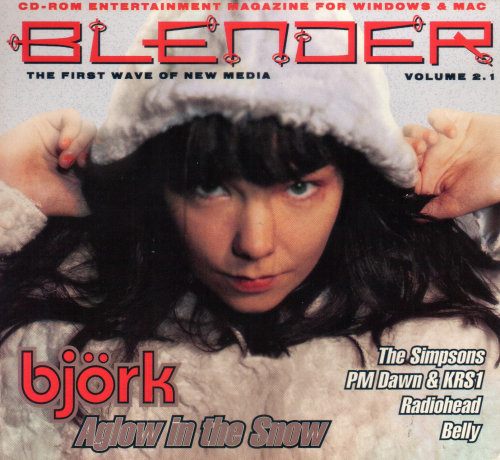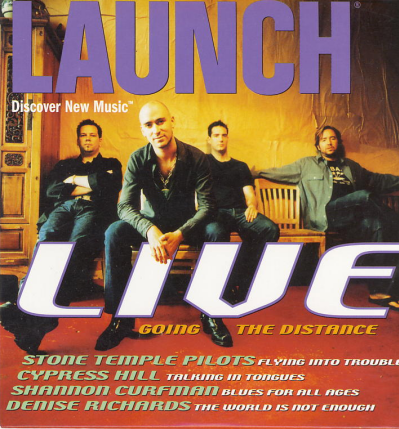The Forgotten History of the CD-ROM Magazine
For a time in the 1990s, some publishers thought they were the future.

For a brief, shining moment, CD-ROM magazines were seen as the next frontier in publishing. (Photo: dorrie/shutterstock.com)
A version of this post originally appeared on the Tedium newsletter.
The promise of multimedia technology led creators of all stripes to do particularly crazy things in an effort to seem hip and with the times.
The CD-ROM, much like the sound card, was seen as the lynchpin for much of this innovation—as it could hold a large amount of data, making room for audio, video, and interactive features that no piece of paper, glossy or otherwise, could pull off. A handful of magazines saw the potential of the CD-ROM and saw dollar signs. Problem was, this was an idea without an audience at first, and there was no clue if creating multimedia content in lieu of a mag would actually work. (It didn’t.)
Despite its ultimate failure, though, the publishing world’s bizarre, noble experiment in multimedia deserves a moment in the sun.
“Quick: What are the most compelling features of a magazine? Exactly: You can take it to the john,” Entertainment Weekly critic Ty Burr wrote of magazines in 1994 in a round-up of their CD equivalents. “You can throw it under the desk when your boss walks in. You can rip off the cover and post it on the wall or rip out that stink bomb of a perfume ad and throw it away. In short, a magazine is disposable, portable, malleable.”
CD-ROM magazines offered none of these things. Laptops weren’t common, so you were forced to sit in one place to interact with these periodicals. But when you did put one inside of your Pentium II, you were promised something of a futuristic experience that was split somewhere between MTV News and virtual reality.
What you got, oftentimes, was a confusing interface, a handful of interviews, and a lot of marketing—because it was the ’90s, AOL installation was often an option.
CD-ROM magazines often included previews of other CD-ROMs—as if the multimedia in your disc drive wasn’t already impressive enough. Here’s an example of what this sort of intensely meta offering looked like:
The interfaces were often experimental and ramshackle—or to put it another way, confusing. You remember how some early websites had designs where you never knew where to click? CD-ROM menus were like that, multiplied to 11. Watch this poor guy attempt to click through this Nine Inch Nails story on the first issue of Substance Digizine. He has no clue what to do!
Sometimes, there’d be stuff on these discs that didn’t seem very congruent. NautilusCD, for example, had a deal with the new-age record label Windham Hill, which had built a name for itself as the new age label du jour.
And Medio Magazine, which promoted its offering with the tagline “like a new encyclopedia every month,” felt like there would be an audience for a periodical-style version of Encarta, which according to Variety, was loaded with old Associated Press copy, proving to the world that Google couldn’t come along soon enough.
But that didn’t stop traditional magazine folks like Felix Dennis from investing in the offerings. Dennis was the guy behind the magazine Maxim, and it made a lot of sense that he was. The British publisher, who died in 2014, was prominent enough to receive an obituary in The Economist, but whose reputation was such that the obit almost immediately called him “a hedonist” and spoke of Dennis’ masterful ability to spend millions of dollars on all sorts of excesses.
Almost immediately after starting his career with the counterculture magazine Oz, Dennis went to jail on an obscenity charge, only for John Lennon to step in and record a charity single to help pay the magazine’s legal fees.

Björk on the cover of issue 2.1 of CD-ROM magazine Blender, 1995. (Photo: WikiCommons)
To put it lightly, Dennis was a bit of a risk-taker, which is probably why the idea of a CD-ROM magazine appealed to his sensibilities. In 1994, his company Dennis Publishing launched the first edition of Blender, a monthly pop-culture magazine designed to appeal to the multimedia crowd.
Star power was not lacking from the magazine, which offered a nice halfway point between MTV-style interviews and print. Early issues featured interviews with Bjork and Devo, and numerous vignettes featuring a pre-Daily Show Jon Stewart.
“Hey you’re watching Blender,” John Flansburgh, of the band They Might Be Giants, said at the start of one video. “It’s interactive! Click on my face! Click on my damn face!”
Dennis invested $5 million of his money into the effort, hoping to see some dividends. He did not, with the initiative failing to sell enough copies to recoup its operating costs.
“I loved it. So did the rest of the media. We won a zillion awards. The designers and editors were fêted and rivals began to prowl around the corridors wondering if Blender meant the death of ink-on-paper magazines. They needn’t have worried,” Dennis wrote in his cheekily titled book How to Get Rich.
Blender’s biggest competitor in the world of CD-ROM magazines was a little ditty called LAUNCH Magazine, a startup that drew lots of attention upon its launch, including a write-up in The New York Times
Why was the Times interested? It’s because the magazine had seemingly figured out the advertising problem. It was charging Madison Avenue $2,500 per megabyte for ads on its discs, and it had sold big companies on the concept—some with ads as large as 20 megabytes.
“We looked at the other CD-ROM magazines, but Launch looks like the one that’s most likely to really go somewhere,” said Veronica Buxton, an ad exec who placed her client, Janus mutual funds, in the first issue.
The success of LAUNCH on this front highlights the one thing about CD-ROM magazines that actually kind of worked.

A 1999 issue of Launch CD-Rom magazine. (Photo: WikiCommons)
Unfortunately, the model as a whole couldn’t compete with the internet.
“In some ways, we were too early,” LAUNCH Media founder Dave Goldberg said in an interview given just a month before he died in Mexico. “What we got most of the attention for was advertising. People had never seen advertising on their computer. We had a lot of investors tell us: ‘No one will ever want to advertise on computer.’”
 A version of this post originally appeared on Tedium, a twice-weekly newsletter that hunts for the end of the long tail.
A version of this post originally appeared on Tedium, a twice-weekly newsletter that hunts for the end of the long tail.










Follow us on Twitter to get the latest on the world's hidden wonders.
Like us on Facebook to get the latest on the world's hidden wonders.
Follow us on Twitter Like us on Facebook